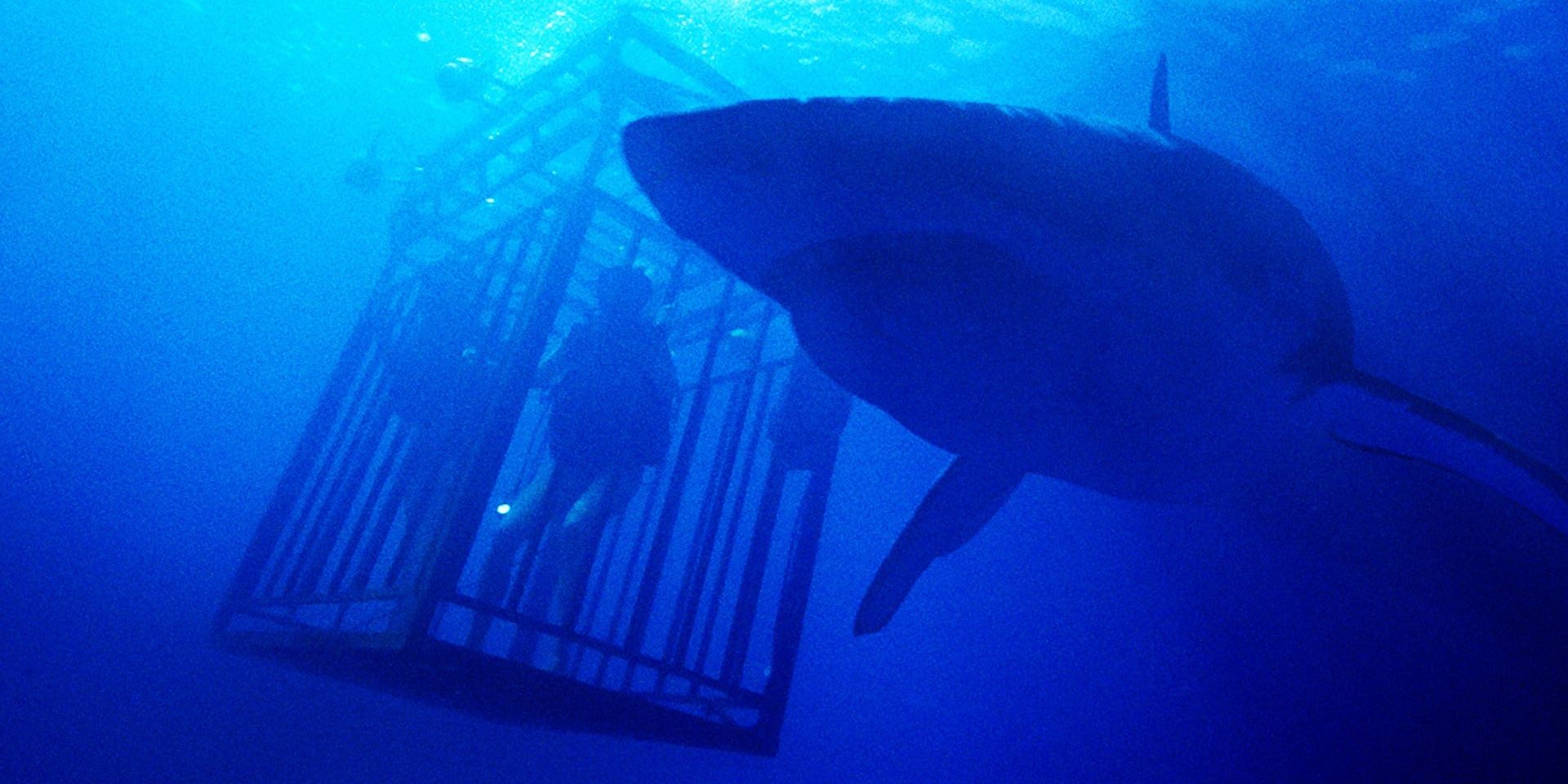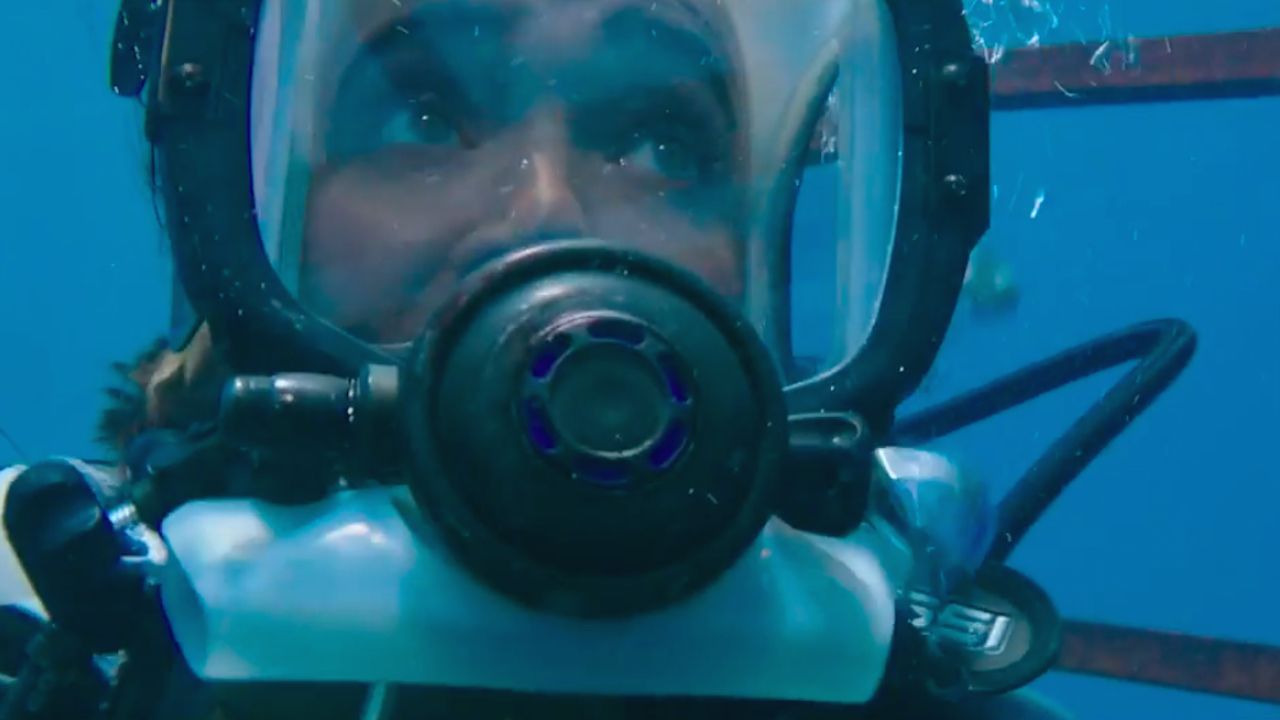Steven Spielberg’s Jaws (1975) was the movie that kickstarted what is now commonly referred to as ‘shark movies.’ In recent years, the resurgence in popularity of these types of movies can be attributed to Sharknado. There were many shark movies made between Jaws and Sharknado, as Sharknado was released almost 40 years after Jaws, in 2013. However, Sharknado genuinely attempted to make fun of the shark movie genre (as opposed to various preceding films which may have only done so accidentally), and it was very successful at this. It paved the way for more comedic iterations of shark movies, as well as increased popularity in the more serious ones such as 47 Meters Down.
Johannes Roberts’ 47 Meters Down (2017) stars Mandy Moore and Claire Holt, two sisters on a trip to Mexico, who wind up trapped underwater in a cage, surrounded by sharks. The film was made with just $5 million but managed to gross over $62 million worldwide at the box office. Based solely on the premise, the film seems particularly compelling, although unfortunately, the quality of the movie as a whole does not live up to the quality of its premise.
47 Meters Down takes place almost fully underwater, thankfully, as virtually every moment that the two women are not in the water is profoundly boring. The film opens with a shot of one sister in the pool, drinking a glass of red wine. She is startled and knocks her glass over into the pool, and the audience sees the red wine spreading into the water like blood. This is a visually compelling start to the film but is weighed down by the next 15 minutes of backstory on one of the sisters, Lisa.
Lisa was recently broken up with for (in her own words) ‘being too boring.’ She and her boyfriend were supposed to go on the trip to Mexico together, but as a result of the breakup, Lisa asked her sister to go with her instead. Her sister, Kate, uses this information to manipulate Lisa into doing a cage dive, despite how Lisa seems almost irrationally afraid of the sharks. This information virtually does not come up ever again and does seem to waste a lot of time that could be spent on the sharks. The film could have been more concise and almost no different if both women had wanted to do the cage dive.
This is a common trope in horror movies, that one person is almost excessively against the activity or event that the audience knows will result in the demise of the characters in the film. This person tends to be rewarded as the ‘one survivor’, even though these activities or events are incredibly common and usually safe in the real world. In the case of this film, Lisa is seen as intelligent for being terrified of the cage dive, but in reality, if she was acting in the same way, it would be excessive. It seems that if she was really so afraid, and if Kate cared about her at all, she wouldn’t force her into this situation.
For the first 45 minutes of the film, there is virtually no legitimate danger as a result of the sharks. The fact that the two women might soon die from a lack of oxygen is a legitimate fear, but this film, considering how it had been marketed as a shark movie, one would imagine that there would be some sort of shark action in the first half of the runtime. Additionally, each time a person is killed by a shark (which is only twice in the entire movie), it happens so quickly that the audience can barely even see the shark.
Despite the lack of sharks, Lisa acts as though she is actively being eaten by one considering how much she is freaking out. Of course, the film would not be so dramatic if both women were completely relaxed about the situation, but at points, Lisa is so annoying that the audience might not even notice how flat the acting of the woman playing Kate is. Unfortunately, because the majority of this film is two characters alone underwater, it does rely heavily on their ability to act and their chemistry with one another.
One thing that is nice about the film is that it doesn’t have any sort of b-plot regarding the people on the boat who accidentally let the women’s cage sink to the bottom of the ocean, other than one instance where one of the men goes to try and save them. As soon as he is on screen while underwater, he is almost instantly killed by a shark. Once the women are underwater, the film chooses to remain completely underwater with them until they are rescued, and it does allow the audience to relate to how the women feel, not knowing what is going on above the surface, and not knowing if there is anyone trying to help them.
Although it does seem like an interesting concept, while watching 47 Meters Down, it becomes clear that there is not much that one can do with it. The film has two separate instances where the cage falls to the bottom of the ocean, and two different endings, including one that only happens in Lisa’s mind because she is suffering from hallucinations. Yet, the runtime of the film is still under an hour and a half, and it seems like Roberts managed to cover pretty much everything that could happen to a person if they were really in this situation. The ending of the film feels particularly drawn out, even before the realization that it’s two separate endings, and it does force the question, was it a good concept that was wasted, or a mediocre concept that tried its best?
All in all, sharks are interesting animals and that is perhaps explanation enough as to why there are so many shark movies. Even though in the real world, sharks rarely attack people, and even rarer do they eat them. But since Jaws, the fear of sharks remains in our ethos despite how unwarranted it may be. At this point, it seems unlikely that the interest in shark movies will ever completely taper off, as even 47 Meters Down has a sequel, 47 Meters Down: Uncaged. One has to wonder what will happen in that film, as it seems that the original was only just barely able to fill up its runtime.



